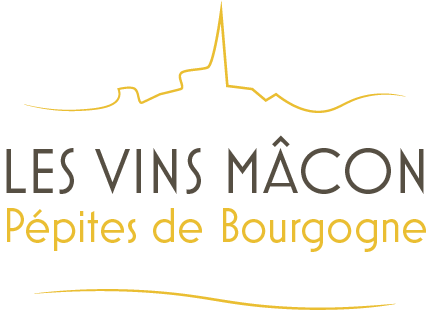Mâcon-Milly-Lamartine
The wines
White wines
Mâcon-Milly-Lamartine whites have nuanced profiles reflecting the diversity of the terroir. Often with a dazzling golden yellow color, the nose can be very flattering or even sunny, thanks to its aromatic generosity that mingles aromas of yellow-fleshed fruit like apricots and peaches, combined with a few tropical touches of mango. In the mouth, they feel like structured wines, with body and volume, counterbalanced by a fairly lively finish.
Red wines
A very intense garnet color, Mâcon-Milly-Lamartine wines produced from the Gamay grape offer indulgent flavors of red and black berries, like crushed strawberry, cherry, and blueberry, combined with floral peony aromas. Velvety in the mouth thanks to some very smooth tannins, the finish is crisp with a touch of spice.
Colors
Production

mâcon-Milly-Lamartine
An additional geographical denomination that is part of the Régionale Mâcon appellation in the Mâconnais.
According to the 2005 specifications rules, the name Mâcon-Milly-Lamartine refers to white, red, and rosé wines grown within a defined area in the villages of Berzé-la-Ville, Berzé-le-Chatel, Milly-Lamartine, and Sologny.
Situation
Located to the west of the longest limestone range, stretching from Tournus in the north to Fuissé in the south, the vineyards of Milly-Lamartine are found on the last western slopes of the Mâconnais. Its southern end runs alongside the communal boundaries of the Mâcon-Pierreclos and Mâcon-Bussières appellation areas.
The poet, historian, politician, and village mayor in 1812, Lamartine profited from the village’s reputation in terms of winemaking. In turn, Milly took his name by official decree in 1902. Describing himself as a “great winemaker”, Lamartine devoted himself to his family estate.
Before him, Lamartine’s native land had been visited by the powerful Barons of Berzé-le-Châtel and the Abbot of Cluny, Hugh the Great, and the poet himself visited the Holy Land in 1832. He solemnly watered the Garden of Gethsemane with wine from Milly.
Terroir
Level 1
Around Milly-Lamartine and in Sologny, the vineyards under the influence of the cool breezes from the first hills of the Haut-Mâconnais sit at between 287 and 380 meters above sea level on slopes facing the rising sun. At the foot of Le Monsard, the vines facing northeast are at between 275 and 330 meters. Beyond the river Fil and the main communication axes, the most dispersed plots sit on the warmer slopes, facing southwest at Berzé-la-Ville, and due south near the chateau at Berzé-le Châtel, between the contour lines at 350-400 meters above sea level.
Level 2
At the foot of Le Monsard (407 meters above sea level), La Roche Coche (456 meters above sea level) in Berzé-la-Ville and Berzé-le-Châtel, the dark gray marl soil is low in limestone, but rich in iron and fairly thick with clay, sprinkled with pebbly layers. In Sologny, the vines grow on Trias clay, dating back some 230 million years. To the west of Milly, the slopes of Mont Cras, at 506 meters above sea level, present the full range of marl-limestone soil from the Bathonian, dating back some 168 million years.

